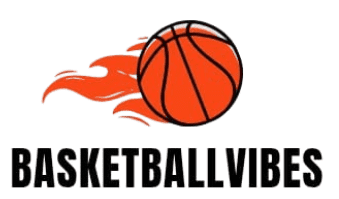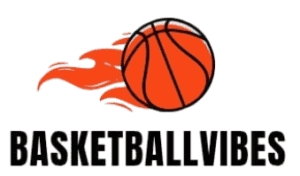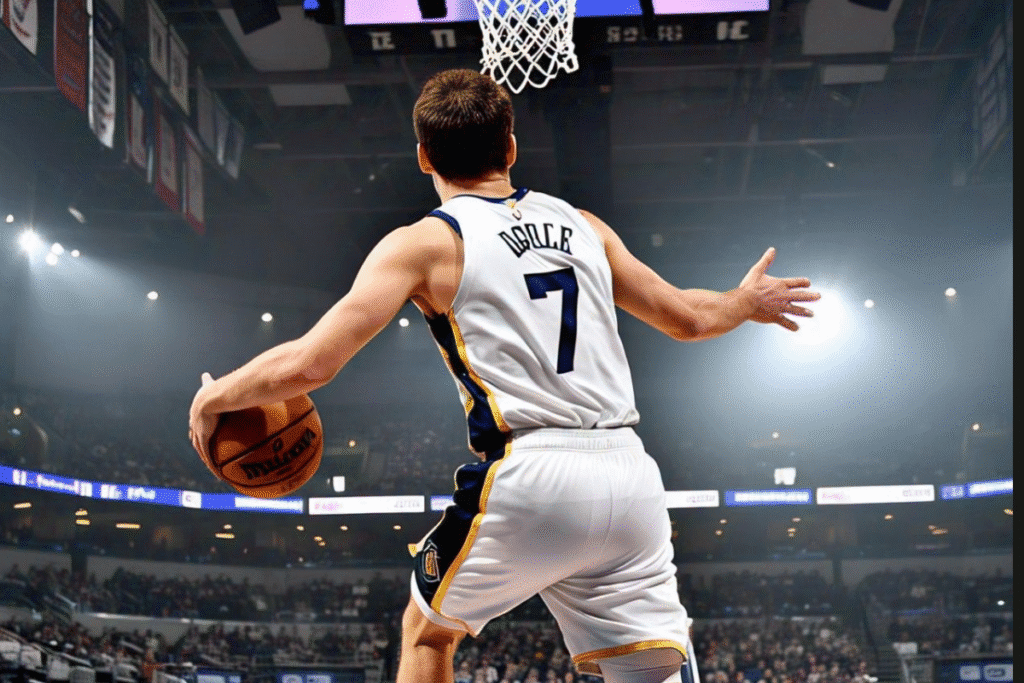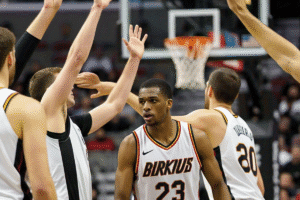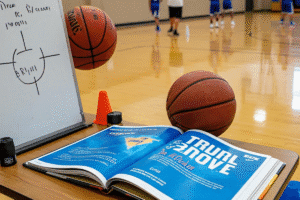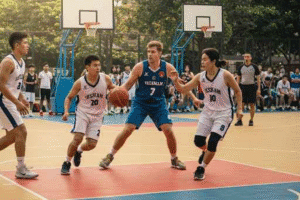In basketball, every possession matters. A single mistake can shift momentum, cost your team points, and disrupt the flow of the game. That’s why learning how to avoid basketball turnovers is a top priority for players and coaches at every level.
What is a Turnover in Basketball?
A turnover happens when the offensive team loses possession before attempting a shot. It gives the ball to the opposing team and often results in an easy scoring chance for them.
Common turnovers include:
- Bad passes
- Traveling violations
- Offensive fouls
- Double dribbling
- Stepping out of bounds
Each of these can change the outcome of a game.
What is an Example of a Turnover in Basketball?
Let’s look at some real in-game examples:
- A player throws a pass across the court that gets intercepted.
- A guard drives into the lane and loses the ball to a defender.
- A forward receives the ball and travels before putting the ball on the floor.
- A center backs into a defender and gets called for an offensive foul.
These are all turnovers—and they all give the other team a chance to score.
What Are the Most Common Turnovers?
Here are the most frequent types:
- Ball-handling errors – Losing the dribble, getting stripped
- Bad passes – Off-target, late, or into traffic
- Traveling and double dribbles
- Offensive fouls – Illegal screens or charges
- Mental lapses – Poor decisions under pressure
Most turnovers come from avoidable mistakes, not elite defense.
The Impact of Turnovers in Basketball
Turnovers hurt more than just stats. They:
- Break your offensive rhythm
- Give the opponent easy points
- Frustrate teammates and coaches
- Shift game momentum
A single turnover might seem small, but over the course of a game, they add up fast.
How Many Turnovers Are Too Many?
There’s no perfect number, but here’s a general benchmark:
- 0–12 turnovers per game – Excellent
- 13–16 turnovers – Acceptable
- 17+ turnovers – Needs attention
Also, watch your assist-to-turnover ratio. A ratio of 2:1 or higher is considered good, especially for guards.
How to Reduce Turnovers in Basketball
Reducing turnovers starts with good habits. Let’s break it down into specific strategies.
1. Master Ball-Handling Basics
Good ball-handling builds confidence. Use drills like:
- Two-ball dribbles
- Crossover + cone work
- Pressure defense simulations
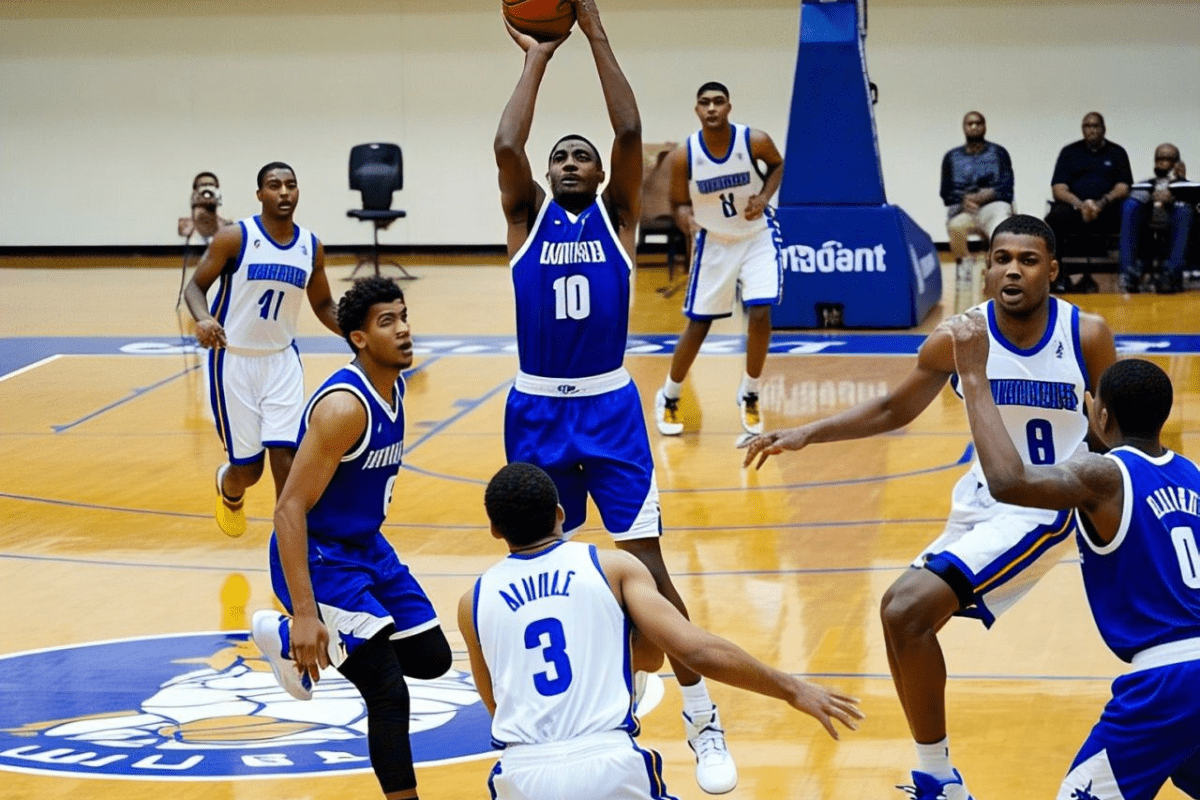
Smart Ball Handling
Just like avoiding turnovers, making smart passes is key to efficient offense. Knowing when and how to deliver the ball can change the course of a possession. That’s why it helps to understand what is an assist in basketball—it highlights the value of good decision-making and how it contributes directly to scoring plays.
2. Improve Your Passing
One of the most effective ways to reduce turnovers is by practicing passing drills with fast-moving targets. These drills simulate game-speed decision-making, helping players improve accuracy when defenders are closing in. By training with moving targets, players learn to:
- Time passes better under pressure
- Adjust trajectory for moving teammates
- Make split-second decisions
Simple passes are better than flashy ones.
3. Practice Footwork Daily
Bad footwork leads to traveling. Improve yours by:
- Practicing pivots and jump stops
- Using cone or ladder drills
- Working on balance when receiving passes
Stable feet = fewer whistles.
4. Work on Decision-Making
Many turnovers happen when players rush or panic. To fix this:
- Play in game-like drills
- Watch game film to learn from mistakes
- Learn to read defenses quickly
Make the right play—not the risky play.
5. Build Physical Strength
Stronger players handle pressure better. Focus on:
- Core strength for balance
- Upper body strength to protect the ball
- Conditioning to stay sharp late in games
Control starts with body control.
6. Study Game Film
Watching film helps players:
- Understand what caused the turnover
- Recognize patterns in defense
- Learn better spacing and timing
It’s a powerful tool for improvement.
7. Keep It Simple
The most effective offenses rely on:
- Quick ball movement
- Unselfish play
- Safe, smart passes
Over-dribbling and risky plays lead to turnovers.
Turnovers by Game Situation
In Transition
Fast breaks are exciting—but risky. Avoid turnovers by:
- Securing the ball before making a decision
- Using bounce passes or lobs, not bullets
- Reading defenders before passing
In Half-Court Offense
Turnovers here often result from:
- Poor spacing
- Rushed passes
- Forced isolations
Run your sets with patience and discipline.
Against Press Defense
Presses expose poor decision-making. Beat them by:
- Spacing the floor
- Using outlets
- Passing over the top
Avoid trying to dribble through the press alone.
Coaching Techniques That Reduce Turnovers
Track and Review Turnovers
Keep detailed turnover stats from practices and games. Track:
- Type of turnover
- Player responsible
- Game situation
Use this data to create targeted drills.
Show Turnovers on Film
Watching turnovers helps players:
- See their mistakes clearly
- Learn from examples
- Adjust their habits faster
Don’t just tell them—show them.
Teach Players to Recognize Situations
Players must know:
- When to push the tempo
- When to slow down
- When to pass or reset
Teaching situational awareness reduces bad decisions.
Tips for Coaches
- Encourage simple passes
- Focus on skills before schemes
- Praise players who take care of the ball
- Run pressure drills in practice
- Reward good decisions, not just flashy plays
Coaching with intention builds habits that last.
FAQs
What causes the most turnovers?
Poor ball handling, rushed passes, and lack of awareness.
Is turnover good or bad in basketball?
Always bad—it gives the ball to the other team and hurts your scoring chances.
How to avoid turning the ball over?
Be calm, keep it simple, and know the situation.
What is a good assist-to-turnover ratio?
2:1 or better is strong. Elite point guards aim for 3:1 or higher.
Conclusion
Avoiding Basketball turnovers isn’t about being flashy—it’s about being smart, disciplined, and consistent. Whether you’re dribbling under pressure or threading a pass through traffic, every possession is a chance to make the right decision.
Focus on fundamentals, stay calm under pressure, and play the game the right way. Fewer turnovers mean more opportunities—and more wins.
